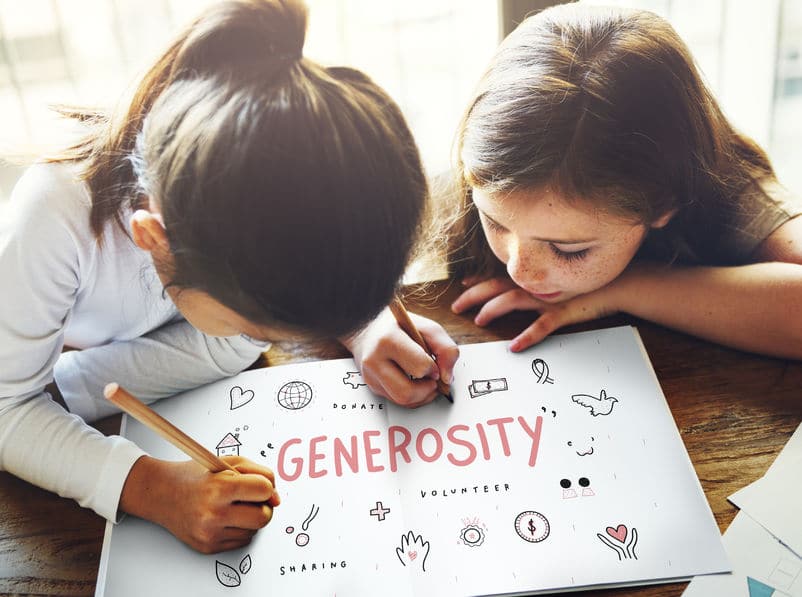Generosity is really about actions, not words. But let’s start with the word itself:
generosity (n.): early 15th century, from the Latin “generositatem,” meaning nobility, excellence, magnanimity.
What does it take to be generous? The precursors are probably GRATEFULNESS, SELF-AWARENESS (that your words and actions can affect others) and PERSPECTIVE (how you fit in with the bigger picture, be it family, society or humanity).
It is also probable that teaching kids to be generous — with their money, time, things — can instill in them the precursors to generosity (gratefulness, self-awareness and perspective) — all of which will help them in whatever endeavors they choose in life.
So, how do you teach kids to be generous? That is the topic of a recent article by Ron Lieber, in which he outlines six ways to get children involved in philanthropy.
At what age do you start? LNW Wealth Manager Monica Padineant gets that question a lot. Monica’s answer is kind of surprising: As early as age three. Typically, that is when children start to ask a lot of questions about people and things around them. They start to become aware of others needs, and if pointed in the right direction, they are usually very willing to help.
Some suggestions: Asking the kids which of their toys/clothes they might want to give away, and together finding a good place to donate them. Volunteering at a food bank or other non-profit and taking the kids with you; Baking cookies to sell in the neighborhood and giving the proceeds to a worthwhile cause.



